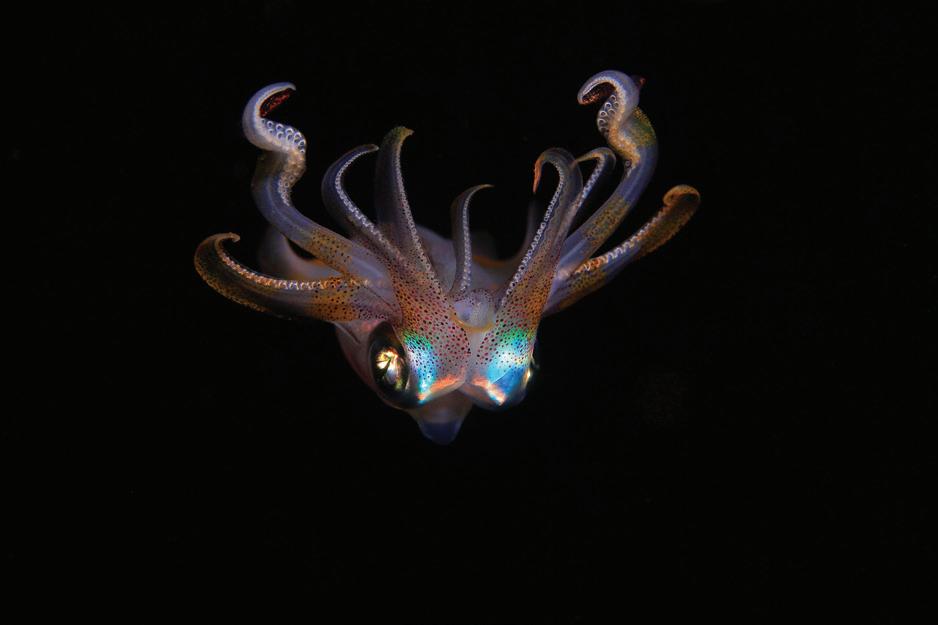
3 minute read
A light at sea
An astonishing variety of ocean creatures can generate light, and there’s as much diversity in how they do it, as why, writes LISA-ANN GERSHWIN.
Visitors to the Uffizi Gallery in Florence, Italy, may be so overcome with emotion in the presence of great art that they sometimes experience fainting, hallucinations, and palpitations – a cluster of symptoms known as Stendhal Syndrome. But these feelings of intense wonder and awe are not just limited to famous paintings and sculptures.
Advertisement
An eerie glow where the waves break. A flash beneath our feet at the water’s edge. Tiny dots of light on our skin. The balmy summer heat reminds us that it’s beach-time, and those who linger after dark are often rewarded with visions of great delight. Glows of light. Flashes so bright.
Bioluminescence, or “living light”, has intrigued humans for thousands of years. Aristotle wrote about sparks in the sea, marvelling at how these fires were not extinguished by water.
Bioluminescence is light made within the bodies of organisms. This cool light – in both meanings of the word – gives off very little heat, and it’s fascinating. The chemical reaction is similar in principle to that of a glow stick: two chemicals meet in the presence of oxygen, resulting in light. In organisms, these two substances are substrates generically known as luciferins and enzymes generically known as luciferases (both derive their names from the Latin lucifer: light-bearer).
Different colours of light are produced by changes in the polarisation and microclimate of the luciferins, as well as by mixing and matching with structurally different luciferases. These different colours are generally associated with habitat, with pelagic and deep-sea species generally emitting blue light, coastal marine species more often shifted toward green, and terrestrial and freshwater species typically shifted into yellow. There are deviations, however, such as the terrestrial railroad worm (Phrixothrix hirtus), which displays two rows of yellow-green lanterns along its body, plus two red lanterns on its head.
At least 11 different types of luciferins are known, along with dozens of associated luciferases, suggesting that bioluminescence has evolved independently many different times on the tree of life. In fact, recent studies have estimated this figure to be at least 94 times, and one study found that light production has evolved at least 27 different times in marine fishes alone.
Luciferin-like proteins can even be found in some non-luminous species, and can be stimulated to produce light by exposure to luciferases. Bioluminescence is more common than you might think. A 2017 study by the Monterey Bay Aquarium Research Institute, in California, found that bioluminescence occurred in more than 75% of the deep-sea animals observed over 17 years of video recordings. Indeed, in the inky darkness of this vast and alien realm – often called the twilight zone – bioluminescence is the dominant form of light...
For the full story on the mysterious phenomenon that is bioluminescence, head below to Cosmos 97 | Energy. Effort. Endeavour










